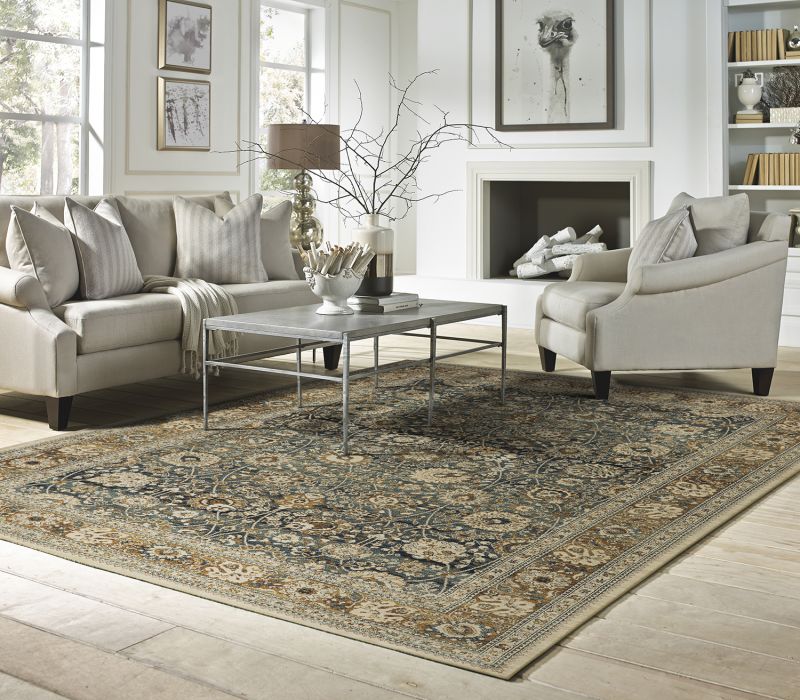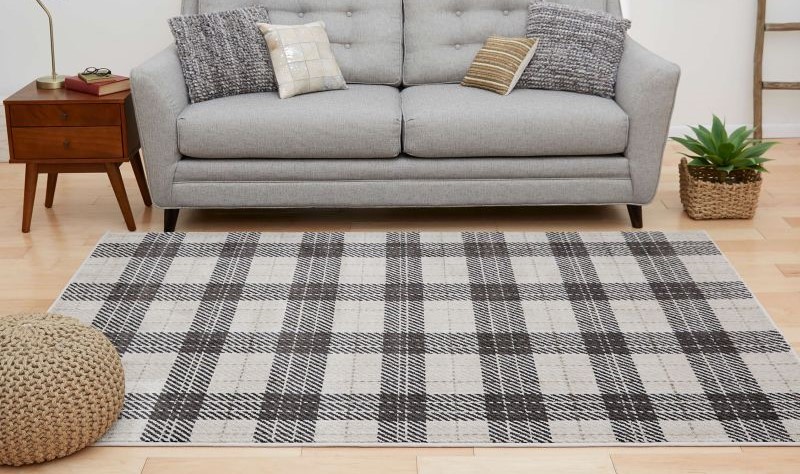How to Mix Paint and Wallpaper with Floor Patterns like a Pro


When one is shouldered with the task of making interior spaces look beautiful, the one area of design that is confusing and often intimidating is choosing from the wide assortment of patterns, colors and textures available in today’s market. The following are a few of my tips to help those in need of advice on the fundamentals of mixing patterns.
Choose three or more patterns in a room
A room usually consists of a rug, furniture, wall color and window treatments. These are the key places to bring pattern and color into a space. If you start with a bold rug as I did here, use solids and smaller patterns to complement the rug.

Keep the patterns limited to the accent pieces like pillows and chairs. Let the larger scale pieces like the black sofa and yellow walls anchor the room with solid colors. Black is always a great neutral to balance a lively, colorful space.
Vary the Scale of the Patterns
It is important to keep balance in a room by having elements in different scales. A large patterned rug requires solids and smaller prints. This creates a balance of color and pattern. Pulling the color out of the rug and onto the wall in a strong Venetian plaster sets off the smaller patterns on the chair upholstery. It is not about matching colors, but more about careful blending of the overall palette in patterns that move your eye from one element to the next.

Layering is the key
What excites me the most about design is the discovery process that takes into account the architecture and style of the house. My method of layering helps to create a design that looks naturally cultivated over time. Starting with a large-scale rug and adding the fabric patterns in these classic barrel chairs, the layering begins. Using the background color on the walls and repeating that color in the drapery continues this effect. The final result is simply amazing, with a rug that can hold its own against the fabulous Victorian woodwork.
Start with Complementary Colors then Add Contrast
Shades of brown and khaki in this library unite the ceiling with the floor. By adding a pop of red on the ottoman, the room becomes alive with color. Layering the graphic black and white zebra rug on top of the sisal carpet defines the room and adds additional contrast to the neutral palette.
Repeat the Pattern
I love geometric patterns that echo through a room. Here I have assembled a bookcase and two rugs that have three different geometric patterns. All the elements are complementary in color but vary in pattern. By surrounding them with solid colors, they appear to have similar scale and style, giving the room a more interesting look. The fundamental point is that all elements don’t have to exactly “match” to work together and look harmonious.

Less is More
By confining and minimizing your palette, you can make a room feel more spacious and larger than it really is. By keeping the upholstery pieces and the rug complementary and analogous in color, you create the effect of coalescing the different elements of the room. The use of a single rug in a room makes it more spacious.

Use Small Patterns as a Backdrop for Larger, More Salient Patterns
The substantial scale in the zebra pattern on the bed frame and the medallions of the euro shams hold sway over the smaller patterning in the large diamond rug. The smaller pattern takes over the room but reads like more of a solid due to its large-scale, neighboring patterns. It is all about balancing the small with the large.

Don’t Let Solids or Negative Space Escape Your Consideration
When I use patterned decorative wallpaper, as I do here with my own Paper in Bastille Brass, I love a stable, solid rug to anchor the room. On this rug, I added a hand painted diamond motif to highlight and reflect the colors in my agate wallpaper. Using a solid rug creates a neutralizing effect on the dominant wallpaper. This gives the eye a place to rest in spite of the overall wall pattern.
© Rug News and Design Magazine.
[A version of this article appeared in print in the April 2016 issue of Rug News and Design Magazine.]



